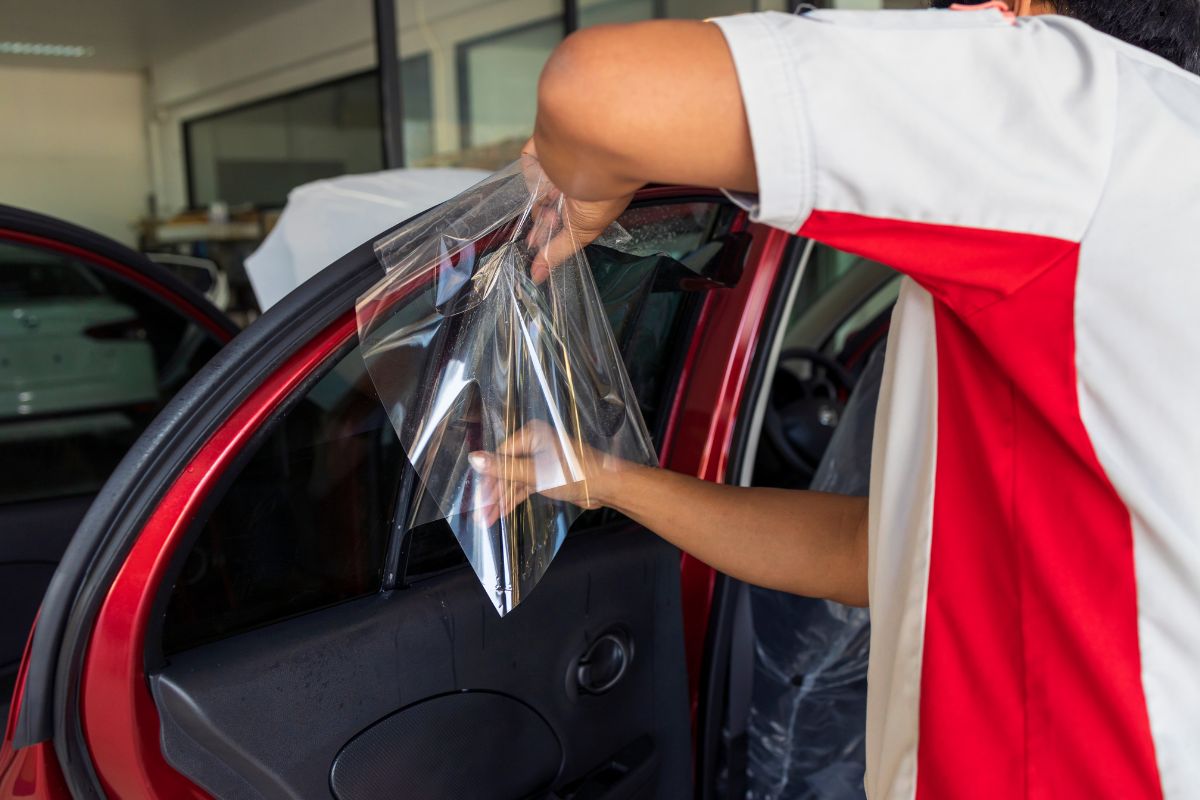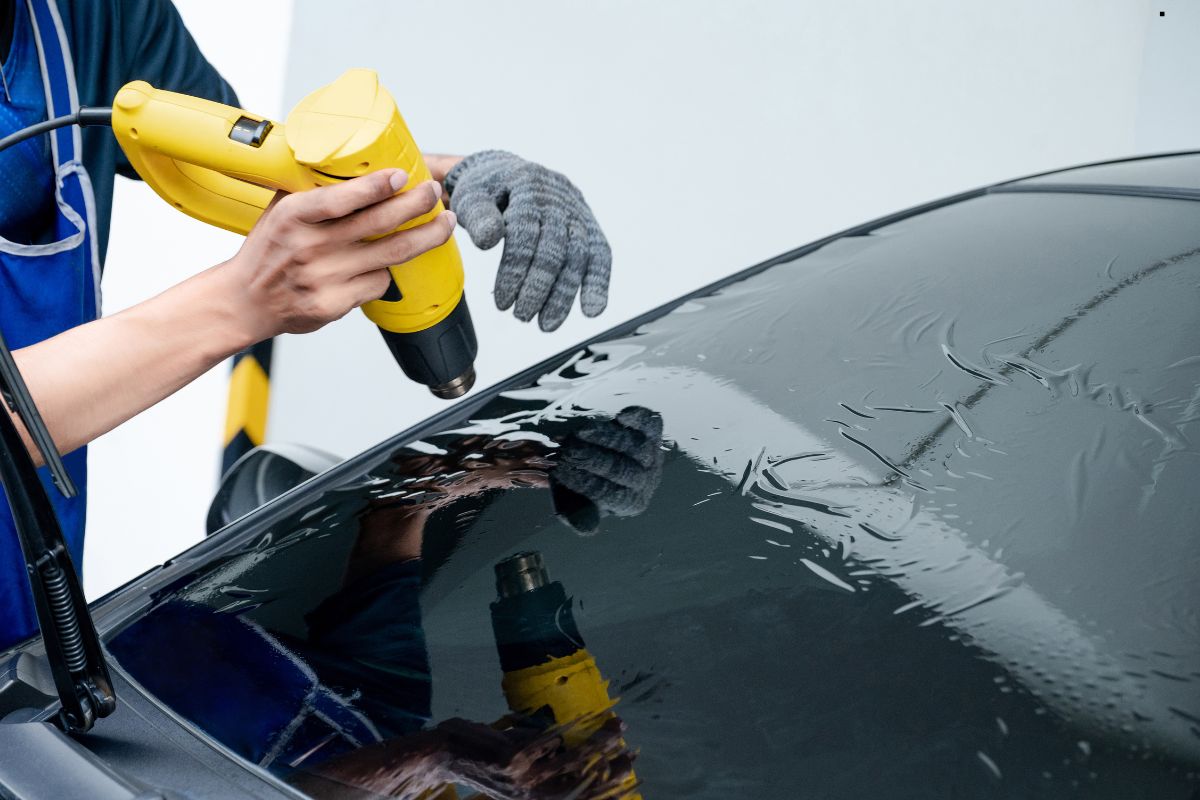
Yes, home window tinting *can* save you money on AC costs during the summer. By reducing the amount of solar heat that enters your home, window tinting helps your air conditioner work less, leading to lower energy bills. This article will explore the science behind window tint, its numerous benefits, and how to choose the right tint for your home to maximize energy savings.
Understanding the Summer Heat & Rising AC Costs

Summer in the USA often means soaring temperatures and skyrocketing air conditioning bills. Many homeowners struggle to keep their homes cool and comfortable without breaking the bank. As energy prices continue to rise, finding effective and affordable ways to reduce AC usage becomes increasingly important. The constant battle to maintain a comfortable indoor temperature puts a strain on both your wallet and your HVAC system. Consider the impact that excessive [AC costs] have on your annual budget and the wear and tear on your equipment.
What is Home Window Tinting?
Home window tinting, also known as window film, is a thin laminate applied to the interior or exterior of glass surfaces in your home. Its primary purpose is to reduce the amount of solar heat that enters your home through windows. Different types of window tint exist, each with varying levels of heat rejection, UV protection, and visible light transmittance. From basic dyed films to advanced ceramic options, there’s a window film to suit almost every need and budget. By blocking solar radiation, window tint helps to keep your home cooler, more comfortable, and more energy-efficient.
Ready to reduce your AC costs? Call us today for a free consultation!
The Science Behind Window Tint and Heat Reduction
Window tint works by blocking various forms of solar energy, including visible light, infrared radiation, and ultraviolet (UV) rays. The effectiveness of a particular window tint is often measured by its Solar Heat Gain Coefficient (SHGC) and Visible Light Transmittance (VLT). SHGC indicates the fraction of solar heat that enters through the window, with lower numbers indicating better heat rejection. VLT measures the amount of visible light that passes through the window, affecting the brightness of your interior. By reducing the SHGC, window tint minimizes the amount of heat entering your home, thus lowering the burden on your AC system.
Benefits of Window Tinting
Beyond just reducing AC usage, home window tinting offers a range of benefits that can improve your home environment and protect your belongings.
Reducing AC Usage
The most direct benefit of window tint is reduced AC usage. By blocking a significant portion of solar heat, your AC unit doesn’t have to work as hard to maintain a comfortable temperature. This translates into lower energy bills and reduced wear and tear on your AC system. Explore our services to see how window tinting can complement your home’s energy efficiency and enhance overall comfort.
Protecting Furniture and Floors
UV rays from the sun can cause fading and damage to your furniture, flooring, and artwork. Window tint acts as a barrier, blocking up to 99% of harmful UV rays and prolonging the life of your valuable possessions.
Enhancing Privacy
Certain types of window tint can increase privacy by making it more difficult for people outside to see into your home. This is especially useful for ground-floor windows or homes located in densely populated areas.
Improving Comfort
Window tint reduces glare from the sun, making it easier to watch TV, work on your computer, or simply relax in your living space. This creates a more comfortable and enjoyable environment for you and your family. Glare reduction is a huge benefit!
Ready to enjoy a more comfortable and energy-efficient home? Call us now for a free quote!
Does Window Tint *Really* Save Money?
The question on everyone’s mind is, “Does window tint really save money?” The answer is generally yes, but the amount of savings depends on several factors.
Factors Affecting Savings
Factors such as your climate, the type of windows you have, the direction your windows face, and the type of window tint you choose all play a role in determining the amount of energy savings you can expect. Homes with large, south-facing windows in hot climates will generally see the most significant savings.
Calculating Potential Savings
While it’s difficult to provide a precise calculation without knowing the specifics of your home, you can estimate potential savings by considering the SHGC of your existing windows and comparing it to the SHGC of the window tint you’re considering. Many window film manufacturers offer online calculators to help you estimate potential savings.
Real-World Examples & Case Studies
Numerous case studies and real-world examples demonstrate the energy-saving benefits of window tint. For instance, the [U.S. Department of Energy] (External Link: Link to a U.S. Department of Energy page about window film) has published information highlighting the energy-saving potential of window film in both residential and commercial buildings. These examples provide evidence of the real-world impact that window tint can have on energy consumption.
Image Suggestion: A before-and-after image showing a home with high energy bills before window tint and lower energy bills after window tint.
Choosing the Right Window Tint for Your Home

Selecting the appropriate window tint is crucial to maximizing energy savings and achieving your desired level of comfort and privacy.
Types of Tint (Dyed, Metallized, Ceramic, etc.)
Different types of window tint offer varying levels of performance and aesthetics. Dyed films are the most affordable but offer the least heat rejection. Metallized films provide better heat rejection but can interfere with electronic signals. Ceramic films offer excellent heat rejection without signal interference and are considered the highest-quality option. Consider comparing [ceramic window film benefits] (Internal Link: Link to a page comparing different film types).
Considerations for Different Climates
The ideal window tint for your home will depend on your local climate. In hot climates, you’ll want a tint with a low SHGC to maximize heat rejection. In colder climates, you may want a tint that allows more solar heat to enter your home during the winter months to help offset heating costs. Learn more about our Domestic Window Cleaning Services for a complete solution to your window care needs.
Professional Installation vs. DIY
While DIY window tint kits are available, professional installation is generally recommended to ensure a proper application and avoid bubbles or wrinkles. Professional installers also have the expertise to recommend the best type of tint for your specific needs and ensure that it complies with any local regulations.
Potential Drawbacks and Considerations
While window tinting offers numerous benefits, it’s essential to be aware of potential drawbacks and considerations.
Initial Investment Costs
The initial cost of window tinting can be a barrier for some homeowners. However, it’s important to consider the long-term energy savings and other benefits when evaluating the cost-effectiveness of window tint.
Potential for Seal Damage
In older windows, the application of window tint can potentially damage the seals between the glass and the frame. It’s important to inspect your windows carefully before applying window tint and consult with a professional if you have concerns.
HOA Restrictions
Some homeowners associations (HOAs) have restrictions on the type or darkness of window tint that is allowed. Be sure to check with your HOA before installing window tint to avoid any potential violations. Always remember to review your [HOA Restrictions]
Alternatives to Window Tinting
While window tint is an effective solution for reducing heat gain, several alternative options can also help lower your AC costs.
Blinds and Shades
Blinds and shades are a simple and affordable way to block sunlight and reduce heat gain. Blackout curtains are particularly effective at blocking out heat and light.
Energy-Efficient Windows
Replacing your old windows with energy-efficient windows can significantly reduce heat gain and improve your home’s overall energy efficiency. Low-E windows are designed to block solar radiation and reduce heat transfer.
Landscaping for Shade
Planting trees and shrubs strategically around your home can provide shade and reduce the amount of sunlight that reaches your windows. This is a natural and aesthetically pleasing way to lower your cooling costs.
Conclusion
So, is window tint right for you? Home window tinting offers a compelling solution for reducing AC costs, protecting your furniture, enhancing privacy, and improving comfort. While there is an initial investment to consider, the long-term energy savings and other benefits can make it a worthwhile upgrade for many homeowners. By carefully considering your climate, window type, and budget, you can choose the right window tint to maximize your energy savings and create a more comfortable and energy-efficient home. If you are planning [Home Improvement] (Internal Link: Link to a blog post on common home improvement projects), adding window film is a good option to explore!
FAQs
How long does window tint last?
The lifespan of window tint varies depending on the type of film and the quality of installation. Generally, you can expect window tint to last for 10-20 years.
How much does window tint cost?
The cost of window tint varies depending on the type of film, the size of your windows, and whether you choose professional installation or DIY. On average, you can expect to pay between $5 and $20 per square foot.
Can I install window tint myself?
DIY window tint kits are available, but professional installation is generally recommended to ensure a proper application and avoid bubbles or wrinkles.
Does window tint void my window warranty?
Some window manufacturers may void your warranty if you apply window tint to their windows. Be sure to check with your window manufacturer before installing window tint to avoid voiding your warranty.
Ready to take the next step? Contact us today for a free consultation and let us help you find the perfect window tint solution for your home.


